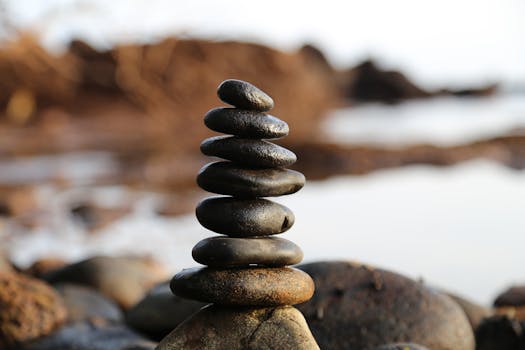
“
Mindfulness Practices for Stress Relief: Finding Calm in a Busy World
Introduction to Mindfulness

Mindfulness is the practice of being present in the moment, paying attention to our thoughts, feelings, and sensations without judgment. It’s a powerful tool for reducing stress and anxiety, improving mental health, and increasing overall well-being. In this article, we’ll explore the benefits of mindfulness practices for stress relief and provide tips on how to incorporate them into your daily life.
Benefits of Mindfulness for Stress Relief

Regular mindfulness practice has been shown to have numerous benefits for stress relief, including:
- Reduced symptoms of anxiety and depression
- Improved sleep quality
- Increased focus and concentration
- Enhanced emotional regulation
- Boosted immune system function
Mindfulness Practices for Stress Relief

Here are some mindfulness practices you can try for stress relief:
Meditation
Meditation is a powerful mindfulness practice that involves focusing your attention on a single point, such as the breath, a mantra, or a physical sensation. Regular meditation practice can help reduce stress and anxiety by teaching you to stay present and focused. For more on integrating healthy habits into your life, check out our article on Healthy Meal Prep Ideas for Busy Lifestyles.
Yoga
Yoga is a physical practice that combines movement, breathwork, and meditation to promote relaxation and reduce stress. It can help improve flexibility, balance, and strength, while also calming the mind and reducing symptoms of anxiety and depression. You might also find our post on Natural Remedies for Common Ailments helpful for enhancing your wellness journey.
Deep Breathing Exercises
Deep breathing exercises involve focusing on the breath and using conscious breathing techniques to calm the mind and body. This can be done anywhere, at any time, and is a great way to reduce stress and anxiety in the moment.
Body Scan Meditation
Body scan meditation involves lying down or sitting comfortably and bringing your attention to different parts of the body, starting at the toes and working your way up to the head. This can help release physical tension and promote relaxation.
Mindful Movement
Mindful movement involves paying attention to the physical sensations and movements of the body, such as walking, running, or other physical activities. This can help cultivate a sense of awareness and presence, reducing stress and improving overall well-being.
Tips for Incorporating Mindfulness into Your Daily Life

Here are some tips for incorporating mindfulness practices into your daily life:
- Start small: Begin with short mindfulness practices, such as 5-10 minute meditation sessions, and gradually increase the duration as you become more comfortable with the practice.
- Make it a habit: Incorporate mindfulness practices into your daily routine, such as right after waking up or before bed.
- Find a quiet space: Identify a quiet, comfortable space where you can practice mindfulness without distractions.
- Be consistent: Aim to practice mindfulness at the same time every day, so it becomes a consistent part of your routine.
- Seek guidance: Consider working with a mindfulness teacher or coach to help you get started and provide guidance and support.
See more:
https://www.mindful.org/
https://www.headspace.com/
https://www.calm.com/






